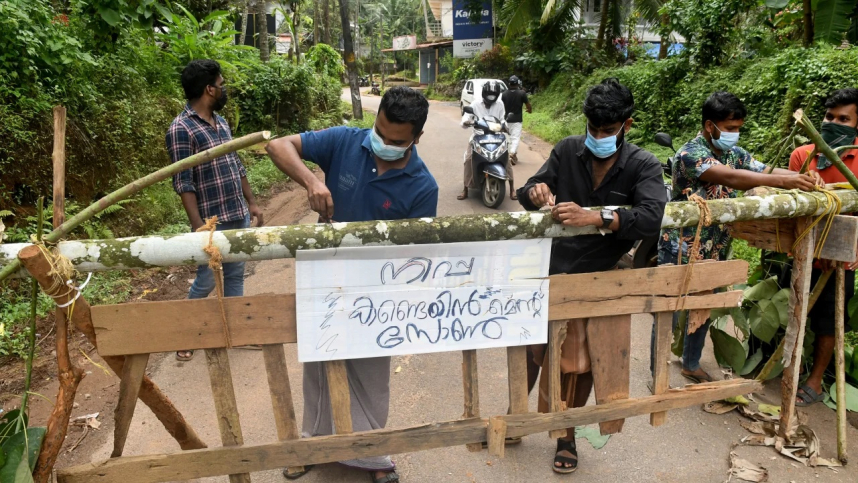
Indian authorities rush to contain a deadly Nipah virus outbreak in Kerala
A state in southern India is taking measures to contain an outbreak of the Nipah virus after two people died from the rare and often deadly disease, shutting schools and testing hundreds to prevent its spread.
Kerala’s chief minister Pinarayi Vijayan said the virus has been detected in the state’s Kozhikode district, urging residents to exercise caution and follow the health department’s safety guidelines.
Two people have died from the virus, he said in a statement Wednesday, the state’s fourth outbreak since 2018. “We should not be afraid, but face this situation with caution,” Vijayan wrote on social media.
Nipah is a zoonotic virus transmitted from animals to humans, according to the World Health Organization (WHO). However, it can also be transmitted through contaminated food or directly between people.
Infection with the virus can cause mild to severe disease, according to the US Centers for Disease Control and Prevention (CDC). Symptoms often begin with a headache and drowsiness but can quickly transform into a coma within a matter of days, the CDC says.
It can also cause acute respiratory syndrome – where the lungs cannot get enough oxygen to the body – and fatal encephalitis, an inflammation of the brain.
There is no vaccine, and treatment is limited to supportive care.
So far in Kerala, more than 700 people have been identified as close contacts and are being tested for the virus, the state’s health minister Veena George told reporters on Wednesday.
Of those, 77 are considered “high risk,” she said, adding the group has been asked to remain at home and monitor their health.
Authorities in Kozhikode have shut some schools in the district, its district collector said in a statement Wednesday. Meanwhile, seven villages have been declared “containment zones,” Reuters reported.
Multiple outbreaks in Kerala
Kerala experienced a deadly outbreak of the Nipah virus in 2018, killing 17 people and causing widespread panic in the state. More than 230 people were tested during that time as authorities embarked on a rigid contact-tracing operation to contain its spread.
Among the dead was a nurse who was treating patients at a hospital in Kozhikode.
The following year, Kerala put more than 300 people under surveillance after a man was diagnosed with the virus. The state had another outbreak in 2021, claiming the life of a 12-year-old boy.
Nipah virus was first identified during a 1998-1999 outbreak in Malaysia, where nearly 300 people were infected and more than 100 died, according to the CDC. More than a million pigs were euthanized to halt its spread.
The virus was named after the village of Kampung Sungai Nipah in Malaysia, where pig farmers contracted the disease.
During that outbreak, most human infections resulted from direct contact with sick pigs or their contaminated tissues, according to the WHO. There have been subsequent outbreaks in India and Bangladesh, with more than 600 reported human cases between 1998 and 2015, it added.
Human-to-human transmission of the Nipah virus has also been reported. According to the WHO, between 2001 and 2008, around half of reported cases in Bangladesh were due to human-to-human transmission resulting from workers providing care to infected patients.
The virus is on the WHO’s list of epidemic threats in need of urgent research and development.
photo (Stringer/Reuters): Residents fix a sign reading, "Nipah containment zone," in the Kozhikode district of Kerala, India, on September 13.